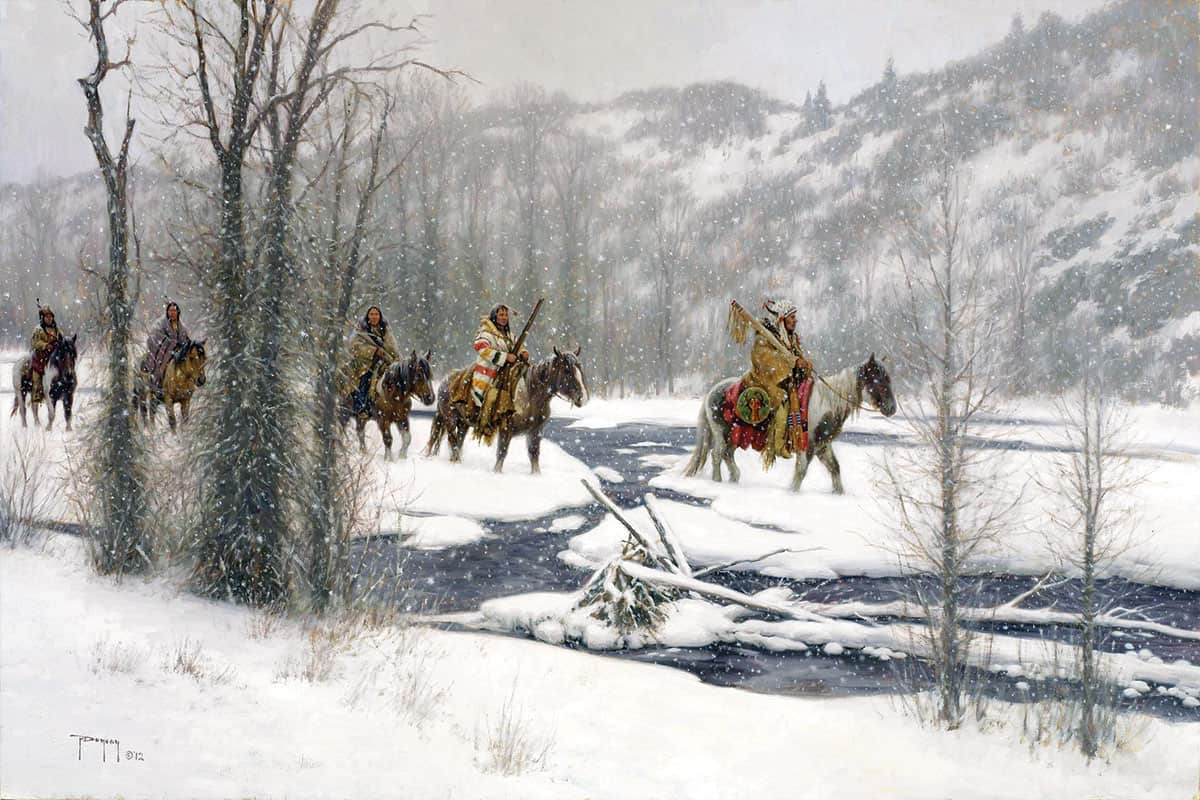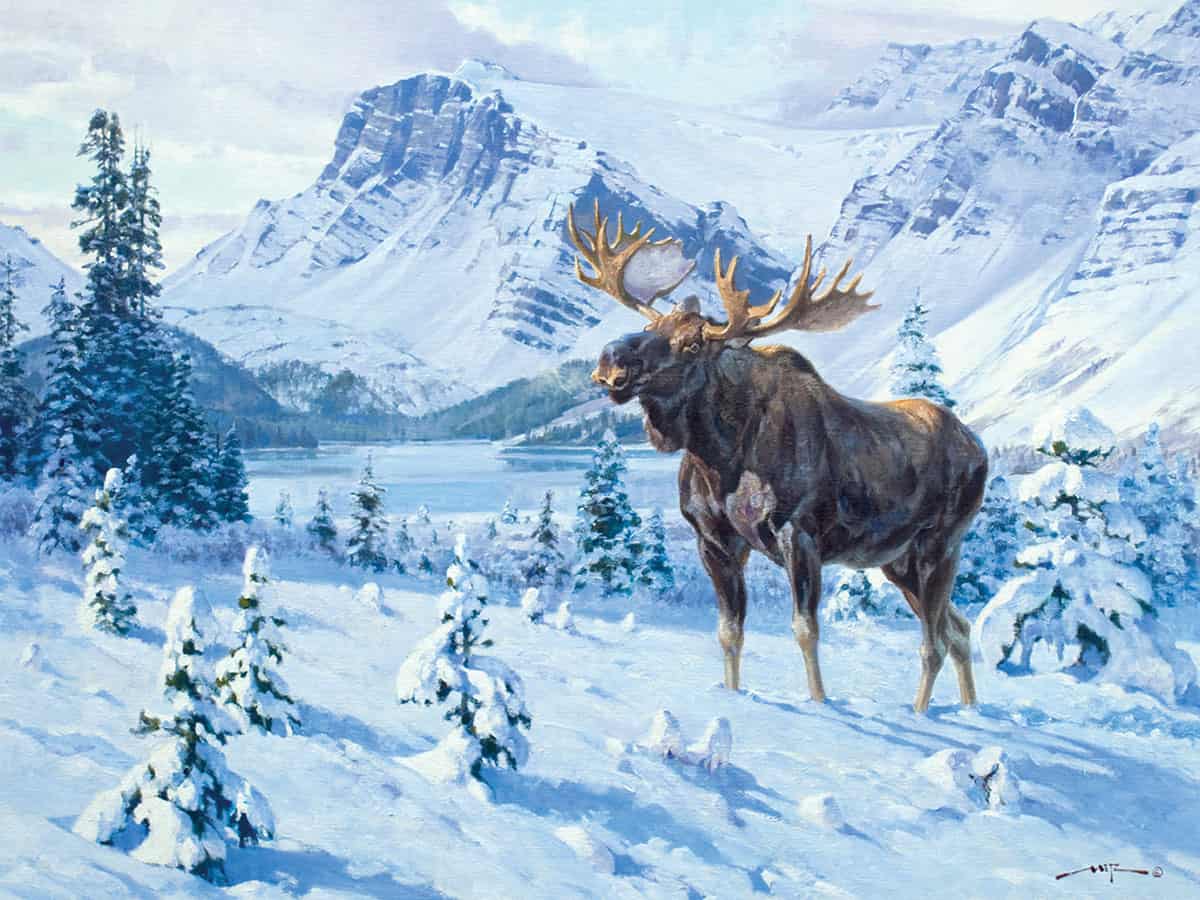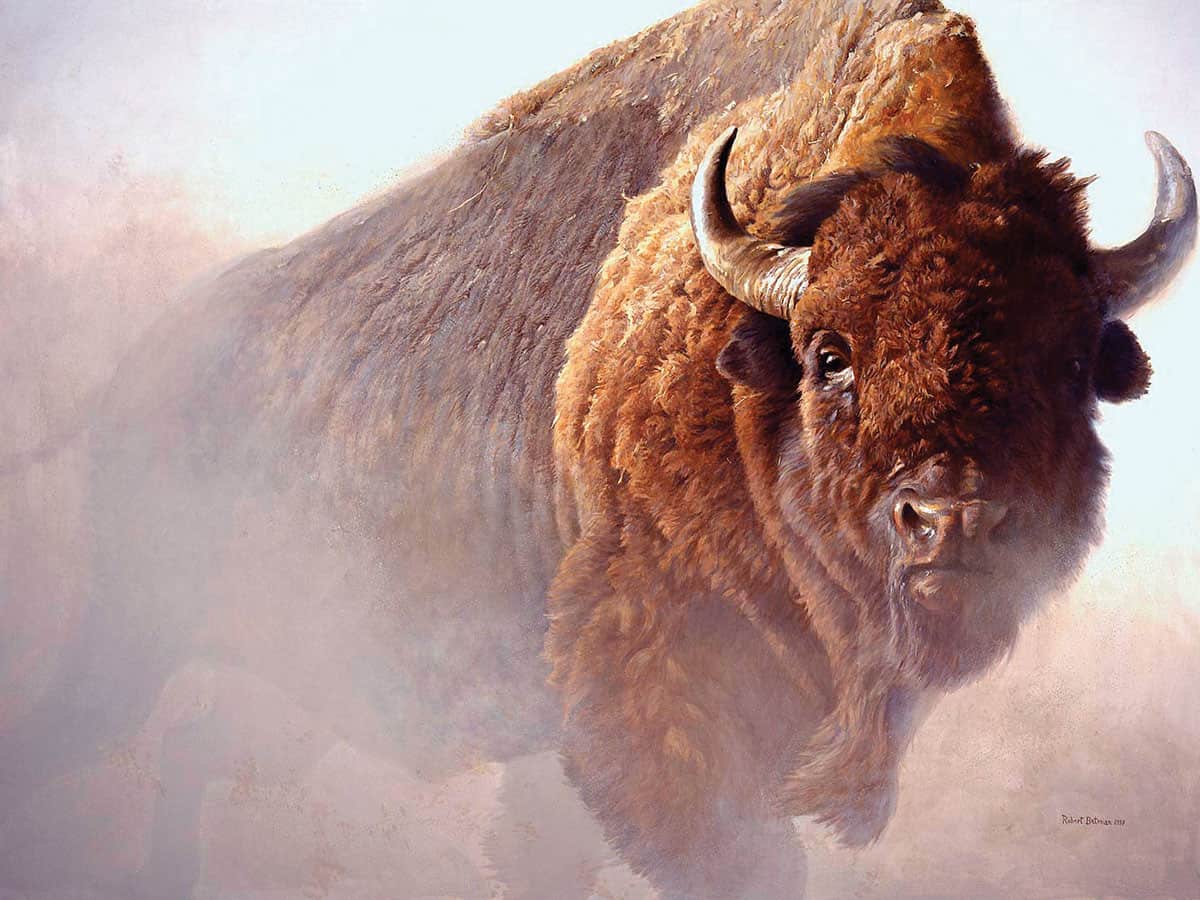Read The
Current Issue
Dead or Alive?
Yes, you can find a fair amount of contemporary art in Jackson Hole today, but it’s western and wildlife art that still rule the valley’s art scene.
By Isa Jones

TODAY, THERE ARE over thirty galleries in Jackson Hole, and the art on their walls ranges from traditional western/wildlife (Remington) to European (Picasso) to pop art (Warhol) to abstract contemporary (Monica Aiello). And then there are local cafes, which all exhibit the work of area artists. But Jackson Hole wasn’t always so artsy.
In 1963, there was one gallery in town, Trailside Galleries, and two types of art, wildlife and traditional western. By the turn of the millennium, a couple dozen other galleries had opened, but it was still traditional western and wildlife art that dominated the scene. In the last decade, though, you’d be excused for thinking these genres were falling by the wayside, as new galleries focusing on contemporary artists and broader subject matter opened. But, despite the diversification of the valley’s art scene, Jackson Hole remains one of the country’s biggest, and best, markets for traditional western and wildlife art; only Santa Fe and Scottsdale are larger.
“Jackson Hole and Wyoming are still thought of as the West,” says Maryvonne Leshe, managing partner of Trailside Galleries. “The real West—cowboys and Indians. There’s so much western history here.” In Jackson, there are still “guys wearing cowboy boots and hats.” Today’s collectors may have more modern tastes, but, because they’re in Jackson where we have wooden sidewalks, policemen riding horses, and summer stagecoach rides, they end up searching for that western spirit. Or maybe they don’t have modern taste. “There are still collectors that remember John Wayne and the western movies, and want the more traditional art,” Leshe says.
TRADITIONAL WESTERN ART in Jackson began in the 1800s, when the first European and American settlers visited the valley. This landscape and its wildlife were like nothing settlers had seen before, and they captured it in sketches and paintings. “[American western and wildlife art] has strong European roots,” says Adam Harris, curator at the National Museum of Wildlife Art (NMWA), which celebrates its thirtieth anniversary in 2017 and whose permanent collection includes more than 5,000 pieces. “When European artists were able to travel the globe, they painted those animals that were of interest. It’s a very strong tradition in North America.”
The NMWA, while not the first place to celebrate western art in Jackson Hole (Trailside preceded the museum by twenty-five years), put the valley on the map as a national destination for its fans and collectors. “It’s a mutually beneficial relationship,” Harris says. “We go down to an exhibit of a new artist and say, ‘Hey they might be good for us one day.’ Or we have an exhibit here and a gallery says, ‘We might like to work with them.’ ”
In addition, the museum puts all the art that collectors or just casual browsers and tourists see around town into a larger context, according to Harris. “It’s important to realize that a lot of what we’re showing is the historic aspect of this; we’re showing the roots of a lot of what you see in the galleries downtown today,” he says. “As Jackson has grown in terms of galleries, we’ve also grown in step, but also in some ways we are leading the charge.” Trailside’s Leshe says, “We have introduced collectors to a number of artists, and every one of the western artists we’ve introduced has gone on to major museum shows.” Some of these shows have been at the NMWA.
Legacy Gallery represents artists that have had shows at the museum and are in the museum’s permanent collection, too. Legacy opened its first gallery in Scottsdale, Arizona, and expanded to Jackson in 1988, a year after the NMWA opened. Initially, Legacy Gallery here represented the same type of artists as it did in Scottsdale: mostly plein-air artists doing landscape pieces. But Jackson’s western soul quickly found its way onto Legacy’s walls. The gallery has become known for the number of its artists that have participated in and won awards at the prestigious Prix de West show at the National Cowboy & Western Heritage Museum in Oklahoma City, Oklahoma. With Trailside, Legacy is one of the anchors of the western/wildlife art scene. “Western art is timeless,” says Legacy co-owner Brad Richardson. “It stands the test of time, so it will always be around.”


The National Museum of Wildlife Art Turns Thirty
BY 1987, AFTER twenty-five years of collecting, Joffa and Bill Kerr had one of the finest collections of wildlife and sporting art in the country. Together with several others who would one day become the backbone of the NMWA—Marion Buchenroth, Eliza and Tom Chrystie, Robin and Sam Lightner, Mary Mead, and Maggie and Dick Scarlett—they rented 5,000 square feet of space in downtown Jackson, which they named Wildlife of the American West Museum. The Kerrs put their collection on display for others to enjoy. In 1993, Wildlife of the American West had outgrown its space; a new home was needed.
In September 1994, the 51,000-square-foot National Museum of Wildlife Art, constructed out of 4,033 tons of Arizona sandstone, opened on Highway 89 2.5 miles north of Jackson. (The Arizona sandstone exterior was replaced by Idaho quartzite in 2011). While events celebrating the museum’s thirtieth anniversary (wildlifeart.org/events/30th-anniversary)aren’t happening until summer and fall, there’s no reason not to stop in now. The museum’s permanent collection has grown from about 1,000 pieces in 1987 to over 5,000 pieces, and includes work by John J. Audubon, Carl Rungius, Charles Russell, John Clymer, Albert Bierstadt, and even Picasso. There’s a piece that dates to 1496. At the time of the museum’s fifteenth anniversary, Bob Koenke, the publisher of Wildlife Art magazine, put the museum’s significance best: “The National Museum of Wildlife Art is to animal art what Cooperstown is to baseball.”
Jackson Hole Art Auction
RIGHT WHEN IT seemed contemporary galleries and nontraditional western art were taking over the valley’s art scene, Trailside Galleries partnered with Santa Fe’s Gerald Peters Gallery to found the Jackson Hole Art Auction, which specializes in work by living and deceased western and wildlife art masters. The annual auction celebrated its tenth anniversary in 2016. It is now widely recognized as one of the premier auctions of western and wildlife art in the country. Since its founding, JHAA sales have totaled $70.8 million. In 2015, sales were $6.6 million. Last year’s sales were $8.3 million; 83 percent of 388 lots were sold over two sessions. The auction’s record sales year was 2014, when it sold $11.3 million of art. The most a single painting has sold for at JHAA is $1.583 million. That happened in 2011 and was Frederic Remington’s 1893 oil on canvas, He Lay Where He Had Been Jerked, Still as a Log.
“The auction has grown immensely, and that growth has served to place Jackson among the top western art destinations in the nation,” says Madison Webb, JHAA auction coordinator. “Collectors associate Jackson Hole with top-notch western art, and fly in from around the country for the auction each September, spending time in the galleries and museums while they’re here.” While most bidders attend the auction in person, there has been remote bidding from collectors and their representatives in Switzerland, Singapore, and South America.




